Mary Gottschalk's Blog, page 10
July 15, 2013
A Fitting Place – Another Comfort Zone
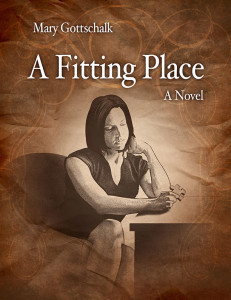 In my memoir, Sailing Down the Moonbeam, leaving my comfort zone meant intentional travel in a small sailboat to unfamiliar locations around the world. By contrast, the protagonist in my novel, A Fitting Place, is hurled out of her comfort zone when virtually everything she takes for granted in her familiar New York City environment is upended.
In my memoir, Sailing Down the Moonbeam, leaving my comfort zone meant intentional travel in a small sailboat to unfamiliar locations around the world. By contrast, the protagonist in my novel, A Fitting Place, is hurled out of her comfort zone when virtually everything she takes for granted in her familiar New York City environment is upended.
The premise of my novel, as with my memoir, is that stepping outside your comfort zone offers myriad opportunities for emotional, intellectual and professional growth. Over the course of the next several months, as I complete the final draft, my blog will explore a number of the themes that recur throughout the novel.
Among them, not necessarily in order of importance or scheduling, are:
the illusion of control,
betrayal vs. loyalty,
honesty vs. integrity,
success and failure
friendship,
parenting,
the cost of keeping secrets,
mindfulness,
intimacy,
communication,
gender identity and sexual fluidity,
myth as a cultural narrative,
My intent is to open up a thoughtful discussion in some challenging arenas that, from time to time, generate strong opinions. I am less interested in defending a particular point of view than in providing a forum where my readers can and will comment based on their own experiences.
As part of this strategy, I will be inviting individuals with personal experience and/or professional expertise in these areas to do guest blogs. If you would be interested in providing a guest piece on one or more of these topics, let me know and I will send you my guidelines.
The post A Fitting Place – Another Comfort Zone appeared first on Mary Gottschalk - Author.
July 8, 2013
Memoir or Autobiography?
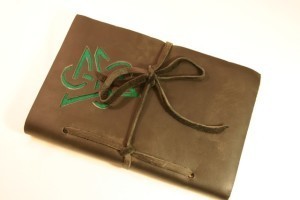 In a recent blog for Memoir Writer’s Journey, I explored the need for a memoirist to let the story “age” long enough to distinguish between “what happened” and “why it matters.” For many of us, it takes time for the events to percolate into the kind of lesson-learned or insight that will resonate with the reader … that “shiver of recognition” that every writer yearns to achieve.
In a recent blog for Memoir Writer’s Journey, I explored the need for a memoirist to let the story “age” long enough to distinguish between “what happened” and “why it matters.” For many of us, it takes time for the events to percolate into the kind of lesson-learned or insight that will resonate with the reader … that “shiver of recognition” that every writer yearns to achieve.
Knowing “why it matters” can be critical for determining what needs to be told and what does not, as truth in memoir does not mean that every single detail must be documented. In my case, there were lots of thrilling nautical adventures that never made it into Sailing Down the Moonbeam because they weren’t relevant to my own insights about (1) control as an illusion and (2) the growth that comes when you step outside your comfort zone. There were other events—the to-ing and fro-ing of my husband as we tried to rescue our failing marriage—that were relevant, but would have bored my readers to tears if I had told the whole truth.
Finding the correct balance between what must be told and what isn’t necessary can be a real challenge. One way to think about this is the difference between memoir and autobiography. An autobiography is a more-or-less a chronological telling of the events and experiences of an individual’s life. Factual accuracy and comprehensive detail are inherent in the genre. Thoughtful introspection may make the tome more readable, but not necessarily more valuable from an historical point of view.
But therein lies the rub. Unless you are a celebrity, the world probably doesn’t care how many siblings you had, where you were on 911, or how many jobs you were fired from. Memoir readers generally want to know what you’ve learned that can make their own lives a little bit better, without having to slog through all the names and dates and places that underpin the world of a writer they never heard of before. Memoir readers are interested in a story from your life, but not necessarily a story of your life.
Which genre do you prefer to read … memoir or autobiography?
The post Memoir or Autobiography? appeared first on Mary Gottschalk - Author.
July 1, 2013
Shaping Your Journey
 A reader recently asked whether the process of writing Sailing Down the Moonbeam had a role in “shaping” my understanding of a journey that took me from one career to another via three years on a small sailboat. My first response was “not really,” but within moments, I knew the answer was “yes.”
A reader recently asked whether the process of writing Sailing Down the Moonbeam had a role in “shaping” my understanding of a journey that took me from one career to another via three years on a small sailboat. My first response was “not really,” but within moments, I knew the answer was “yes.”
It related to our sojourn in Panama. When I first outlined the story, I viewed Panama, along with a host of lovely island stops across the Pacific Ocean, as places where we’d had interesting adventures, but not experiences that specifically contributed to the life lesson—learning to love living out of control—that inspired Moonbeam.
I couldn’t omit Panama entirely, if only because we spent seven months there. But I anticipated half a dozen pages, focused on the challenges of getting through the Canal.
In fact, Panama takes up 41 of the final 209 pages. It was only as I started writing that I understood the role that Panama had played in my journey:
** It was in Panama that I first understood how much of “me” had disappeared over fifteen years of marriage.
As many women do, I had allowed my husband–an extrovert—to make so many decisions about ordinary everyday activities. Not surprisingly, I’d almost lost sight of my own ability to organize life and make friends without his help.
But much of our early time in Panama revolved around his surgeries (first a hernia, then a melanoma). I had no choice but to take the initiative. In Panama, I not only re-discovered who I had once been, but also who I could become.
** It was in Panama that I first began to think about the benefits of “stepping outside your comfort zone.”
Through an incredible bit of serendipity, my husband and I both got part-time jobs that utilized our professional skills. As a result, we transitioned from travelers to residents and had to adapt to a way of life that challenged many of cultural mores and norms we’d taken for granted for four decades. It was often humbling to realize that “my way” isn’t always the best way.
Writing Moonbeam did not change my “memory” of Panama, but it certainly shaped my understanding of the experience, much like journaling can provide a new perspective on a familiar situation. It helped me to understand that Panama set the stage. Without Panama, I doubt I would have been receptive to the lesson that was reinforced each day as we crossed the Pacific Ocean—that a living a life that was out-of-control might be a very good thing indeed.
How has writing shaped your memory?
The post Shaping Your Journey appeared first on Mary Gottschalk - Author.
June 27, 2013
Fine Wine and Memoir
With the recent move, I have let my blogging responsibilities slip. I will be back with regular blogs later this week, but I thought I would point you to my guest blog on Kathy Pooler’s lovely website, Memoir Writer’s Journey. My subject is memoir writing, and the notion that a good memoir, like fine wine, requires aging.
The post Fine Wine and Memoir appeared first on Mary Gottschalk - Author.
June 15, 2013
Finding a New Comfort Zone
 The SOLD sign is gone. The money is in the bank. The new owners have moved in.
The SOLD sign is gone. The money is in the bank. The new owners have moved in.
I’ve loved my century old brick home perched on hill. The open floor plan. Rooms flooded with light throughout the day. Deep windows that didn’t need to be draped. The sometimes joyful, sometimes raucous laughter of neighborhood children. The shaded north-facing garden with its spontaneously-generated masses of tiny grey-green moss flowers alongside my intentional beds of color by the season—daffodils, astilbe, roses, lilies, and phlox.
 I lived there thirteen years, much longer than any place else. It’s where I wrote Sailing Down the Moonbeam and completed several drafts of my forthcoming novel A Fitting Place. Twice now, coming from town, I have driven right past my new home, heading to the old one out of habit.
I lived there thirteen years, much longer than any place else. It’s where I wrote Sailing Down the Moonbeam and completed several drafts of my forthcoming novel A Fitting Place. Twice now, coming from town, I have driven right past my new home, heading to the old one out of habit.
And yet, in a way I don’t fully understand, I am glad that house is behind me.
Some of the reasons are obvious. One is a growing resistance to the burdens of a charming but also aging house with a garden that needs constant tending. Another is my desire to travel; I want a place I don’t have to worry about when I’m away. And it seems right and fitting that Kent and I should have “our” home instead of trying to carve out a place for him in “my” home.
Less obvious is the notion of stepping outside your comfort zone, of having to deal with a world that is different and sometimes unsettling. Since childhood, I’ve consistently strayed beyond the boundaries of whatever situation—good or bad—I happened to be in, in search of new ideas and new experiences.
If you define comfort as places and things that are familiar, I’ve spent most of my life outside my comfort zone.
Perhaps “familiar” is not where my comfort zone lies. Perhaps my comfort zone lies in meeting the challenge of the different and unsettling. Could it be that my much loved house had become too familiar and it was simply time to move on?
How do you define your comfort zone? Do you need to redefine it from time to time?
The post Finding a New Comfort Zone appeared first on Mary Gottschalk - Author.
May 31, 2013
Illusion of Control – Feline Version
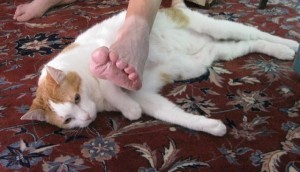 After 16 years, Calliope and I are about to be separated. I will miss our morning breakfast routine, a time when she talks constantly, and has an unerring instinct for being in the middle of the path from the kitchen table to the coffee pot or the refrigerator. Her hope is that Kent or I will massage her belly or her head with a foot (be it shod or bare). We do, of course, and have gotten quite adept at balancing on one foot while the other slides across her fur.
After 16 years, Calliope and I are about to be separated. I will miss our morning breakfast routine, a time when she talks constantly, and has an unerring instinct for being in the middle of the path from the kitchen table to the coffee pot or the refrigerator. Her hope is that Kent or I will massage her belly or her head with a foot (be it shod or bare). We do, of course, and have gotten quite adept at balancing on one foot while the other slides across her fur.
Our first meeting was a moment of perfect serendipity.
A flower shop is not the kind of place you go if you want to adopt a cat. But there, tucked among the seedlings at the Plantshed at Broadway and 96th Street in New York City, was a six-week old handful of white and tan fur, mewing in the thin, reedy and high-pitched sound I associated with a calliope. She was cute, no doubt about it. But when I looked into her hazel eyes, I was hooked. Without a second thought, I tucked her into my bag along with several exotic plants for my terrace and off we went.
Our parting is an equally amazing piece of serendipity. Kent and I are moving into an apartment building that will not allow pets, and for months we’ve agonized over what to do about Calliope. She is too old for the adoption agencies to want her. And since she’s never spent a night anywhere except this house in more than thirteen years, I was sure any move would be intolerably traumatic. Given her age, I couldn’t justify putting off decisions we had to make because of our age, but neither could I justify putting a still healthy and beautiful animal to sleep for my convenience.
And then, when I didn’t think I had any more tears left, we sold our house to a wonderful family of five that wants to keep Calliope. I know they will love her — as I write she is sleeping happily on one of the unwashed tee-shirts they delivered a few days ago, so she could adjust to their smell while Kent and I were still with her. And it seems that we can come and visit her from time to time, at least for a while.
Control is a much over-rated phenomenon. Despite all my planning and organizing, Calliope came into my life on her terms and she is leaving that way as well. No way I could ever have planned any of this. Serendipity? Luck? Who knows, but it sure wasn’t control.
The post Illusion of Control – Feline Version appeared first on Mary Gottschalk - Author.
May 28, 2013
Confessions of an Aging Book Lover
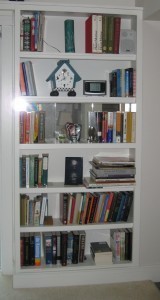 More than a dozen years ago, I discovered Anne Fadiman’s “Ex Libris: Confessions of a Common Reader,” a collection of essays on her love affair with books. My favorite was the story of how, after five years of marriage, she and her husband finally merged their bookshelves, a tedious process that included a lengthy debate as to whose copy of the many duplicate books they would keep.
More than a dozen years ago, I discovered Anne Fadiman’s “Ex Libris: Confessions of a Common Reader,” a collection of essays on her love affair with books. My favorite was the story of how, after five years of marriage, she and her husband finally merged their bookshelves, a tedious process that included a lengthy debate as to whose copy of the many duplicate books they would keep.
My tale has a different twist. Because Kent and I have different tastes in reading we have few duplicates to wrangle over. But the heart of Fadiman’s tale seems all too apt. Our imminent move from a house to an apartment requires us to divest ourselves of at least half the books on our 70 feet of bookshelves.
I have been picking through my share of the library on a daily basis for a month now. Each time I find a few more books I think I can bear to part with.
Commercial photo books and maps of my travels were the first to go: today, the images and information are easier to find on the internet than thumbing through print copies.
Biographies took a big hit. While most are about interesting people, few are really well written or offer enough insights to make me want to read them again. Robert Caro (biographies of Lyndon Johnson), Anais Nin, and Jill Ker Conway are notable exceptions.
Business books: Most weren’t worth reading even when I worked in finance. I should have disposed of them years ago.
Fiction. Any novel I enjoyed found a niche on my shelf. But there are very few I’ll make time to read again. And if, perchance, I do want one, Amazon or my public library will ride to the rescue. What did I keep? Barbara Kingsolver, Sue Monk Kidd, Hermann Hesse, Patrick White, John Barth. Some are great writers, some had a profound impact on me when I first read them … and I have read most of them more than once.
Philosophy. These were among the hardest to sort through, as my continued study of philosophy and religion leads me to refer back to things I read years ago. I’ve kept all but a few that were particularly badly written or badly reasoned.
Cookbooks. I don’t have many, but I’ve kept them all.
As ruthless as I have been, I still have too many books. And the pain gets deeper with every pass.
How about you? What would you keep and what would you get rid of?
The post Confessions of an Aging Book Lover appeared first on Mary Gottschalk - Author.
May 21, 2013
Failure is Your Friend
 One of the key concepts in the MBA short course that I teach on “Managing Career Risk” is that failure plays a critical role in building a career that is ultimately satisfying in both the professional and personal realms.
One of the key concepts in the MBA short course that I teach on “Managing Career Risk” is that failure plays a critical role in building a career that is ultimately satisfying in both the professional and personal realms.
I have framed this idea a number of ways over the years. Making mistakes is how you learn what not to do again. Failure lies not in making a mistake, but in refusing to try again. Failure is never fatal, just as success is never final. Failure is, in fact, a form of success as long as you are able to learn from it.
But those aphorisms are just words. As I noted in my last blog on Teaching as a Map, what makes them come alive is a personal story of growing through failure to success.
And come alive they did when Charlie Wittmack, an athlete who thrives on pushing the boundaries of his physical capacity, came to class and shared his 2010 struggle to complete all three legs of what he calls a “world triathlon”—a 10,000 mile journey that included swimming the Thames and the English Channel, cycling from France to Nepal, and summiting Mt. Everest.
What made his story so compelling was his recognition, from the start, that he was attempting to do what most people considered to be impossible … his recognition that everyone expected him to fail.
Ultimately, he completed all three legs of the triathlon. But several times, along the journey, it seemed that he would fail. Perhaps the worst came when he collapsed from altitude sickness as he cycled up to the highest mountain pass in Tibet. But each “failure” left him closer to his goal than anyone ever imagined he would get. Each failure taught him lessons he could—and did—use in his next attempt. Each failure left him that much closer to the goal he wanted to reach.
The point, I think, of Charlie’s story is not just that failure is your friend, but that if you think big enough, you can’t fail … you just get closer and closer to success.
The post Failure is Your Friend appeared first on Mary Gottschalk - Author.
May 16, 2013
Teaching from a Map
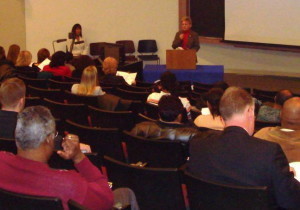 I like teaching, most of the time.
I like teaching, most of the time.
But a few nights ago, as I walked into the first session of the MBA class I teach on “Managing Career Risk,” I wondered why. I don’t like being the center of attention. My sense of humor is not the sort that puts an audience at ease and I fear being struck by lightening if I dare to tell a joke. I much prefer to ask probing questions than to offer solutions.
So why, for the fourth year in a row, was I standing at the front of a lecture room, urging ambitious young professionals to re-think their career choices? As if I knew what choices they should make. As if . . .
Something like an answer came to me a few days later, during a presentation by author Christina Baldwin entitled “Leading Change through Story.” Her message was that the stories we use to make sense of our lives are, metaphorically, maps for those who follow in our footsteps.
And I have lots of stories. Six or seven career changes, depending on how you count. Some remarkable successes and two very painful failures. A history of “dropping out” (three years on a sailboat, two years managing the finances of a non-profit that serves the mentally ill) and then returning to the work-a-day world, each time in a better job than when I left.
Those stories give shape and color to themes that might be considered banal or trite. The growth that comes when you step outside your comfort zone. That most aspects of life—including one’s career progress—depend on factors outside of your control. That a decision to not take a particular career risk is a decision to take a risk of a different sort. The odds that you will be more successful if you love what you do.
Using Baldwin’s frame, the shape and color of my stories allow me to recast these banalities as a roadmap for young professionals peering nervously into the future. After a 40-year career, I have a pretty good idea where the main road is likely to take you … and first hand experience with some of the alternatives that are available if you decide to veer off.
In Baldwin’s frame, my teaching role is not about giving advice or offering solutions. It is about providing a well-drawn roadmap that my students can use to plot their route.
This is why I like teaching. Because I keep learning!
The post Teaching from a Map appeared first on Mary Gottschalk - Author.




